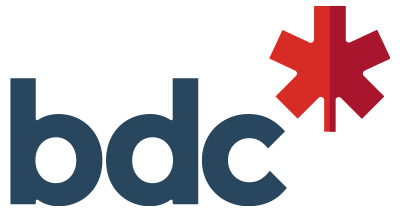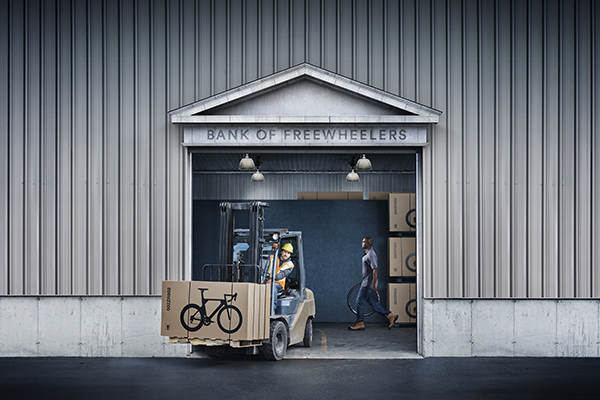Purchasing Industrial Equipment: Calculating the Return on Investment (ROI)
By Julie King | March 13, 2017
Presented by 

There could be several reasons to consider buying new industrial equipment. You may wish to develop new lines of business, replace equipment that is reaching its end of life or save money by switching to more efficient equipment, both in terms of operating cost and space used.
Purchasing industrial equipment is an important business decision. A key part of that decision is how much benefit (return) the business will realize from the purchase (investment.)
This article will explain how to calculate the return on investment when purchasing industrial equipment.
Terms to Know
Return on Investment (ROI): a benchmark used to evaluate the gain on an investment in comparison to the initial amount invested.
Pay Back Period (PBP): an estimate of the number of years needed for the equipment to pay for itself.
Useful Life: the number of years a piece of equipment can operate.
Residual Value: the value of the equipment at the end of its useful life.
Evaluating Your Purchase Decision
The purchase of industrial equipment typically requires a large, up-front capital investment. There are several financial factors that can help you decide whether to buy or not.
Return on investment (ROI) is the one of the most useful decision making tools, because it will help you compare how one capital investment compares to other options.
The Pay Back Period (PBP) is useful because it pinpoints when the equipment will have paid for itself. It is important to also consider the useful life of the equipment in combination with the PBP, so you will be able to estimate the total revenues the equipment will be able to contribute to the business once it has paid for itself.
The residential value is important as it indicates the cash you will be able to get back out of the equipment when it is time to sell.
Estimating Revenues and Expenses
While simple to calculate, the process of determining the expenses that you will use in both the ROI and PBP formulas is a complex, time consuming process.
On your topline, you will need to estimate the revenue the company will generate from the product manufactured with the new equipment.
Regarding expenses, there are many things to consider. When calculating the expenses, be sure to include the cost of:
-
shipping, duties (if applicable) and taxes,
-
installation and training,
-
labour to operate the equipment,
-
operating the equipment, including supplies like chemicals as well as utilities,
-
inspections and maintenance, and
-
debt servicing costs.
The manufacturer or distributor should be able to help you calculate the cost of electricity, supplies and labour. Be sure to do a "sanity check" on their estimates and hedge for the manufacturer presenting the best possible scenarios.
If the equipment is to support an existing line of business, it can also be helpful to calculate the labour cost savings compared to your current costs. To do this, you will need to calculate the current operating costs against the expected savings when the new equipment is up and running.
As technology gets smaller, space savings can be another significant benefit to consider when making buying new industrial equipment.
Calculating ROI
Return on investment (ROI) is an indicator of the profits the business will earn from its investment and is calculated by dividing the net income generated by the equipment by the cost of the investment.
The resulting number, expressed as a percentage, can be a good indicator of whether the investment is worth making.
Here is a sample calculation.
Return-On-Investment (ROI)
What it means: The gain from each dollar invested
Ideal Range: Higher percentages are more desirable, although the ideal range is dependent on the equipment
The Calculation: ROI = Net Income/ Cost of Investment
Example: Two years ago Joshua invested $65,000 into a digital printing press and has generated $95,000 in net revenues from the equipment.
ROI: $95,000/ $65,000 = 146%
Calculating PBP
The Pay Back Period (PBP) is another useful calculation that identifies how long it will take before the equipment has paid for itself. PBP is calculated by dividing the cost of the investment by the annual cash flow, which are the amount of cash the equipment is expected to generate for the business each year.
Here is a sample calculation where the cashflow generated by the equipment is even year over year.
Pay Back Period (PBP) – Even Cash Flow Scenario
What it means: The number of years taken to recover the investment
Ideal Range: Shorter PBP is ideal, although each situation is dependent on the industry and type of equipment being purchased.
The Calculation: PBP = (Cost of Investment / Annual Cash Flows)
Example: Candy Co. invests $400,000 into the production of a new line of candy. This produced cash flows of $50,000 per year.
PBP: ($400,000 / $50,000) = 8 years
Pay Back Period (PBP) – Uneven Cash Flow Scenario
In many companies, the cash flow generated by the equipment may vary year over year. While it is possible to add the estimated cash flow and then calculate the annual average to use in the formula above, this is not ideal if the higher cash flow amounts will be generated in later years of ownership.
This scenario looks at how to calculate PBP by looking at the cash on hand after at the end of each year of ownership.
What it means: The number of years taken to recover the investment
Ideal Range: Shorter PBP is ideal, although each situation is dependent on the industry and type of equipment being purchased.
The Calculation: PBP = (Cumulative Cash Flow Balance at the Beginning of the Year + Cash Flow Gernerated During the Year)
Example: AutoCorp invests in new automotive manufacturing equipment that is expected to produce more cashflow in future years that the initial years.
PBP: brackets () indicate negative cash flow, note that we start with year 0 when the equipment is purchased
| Year | Cash Flow | Cumulative Cash Flow at Year End |
| 0 | (1,500,000) | (1,500,000) |
| 1 | 250,000 | (1,250,000) |
| 2 | 325,000 | (925,000) |
| 3 | 575,000 | (350,000) |
| 4 | 650,000 | 300,000 |
PBP: 3 years + (-350,000 / 300,000) = 3.86 years
Experts note that while the PBP calculation is useful due to its simplicity, one drawback of this calculation is that is does not account for the time value of money. This can best be explained in lay terms by the popular saying a "bird in hand is worth more than two in the bush."
It can be worthwhile to factor the discounted value of cash over time into your PBP calculation by using a discounted payback period calculation, which progressively supresses the cumulative cashflow projections at year end. Your chief financial officer or accounting professional can help you estimate the amount to reduce the cumulative cashflow projections for each year.
Once you have calculated your ROI and PBB, and factored in the end-of-life disposal of the asset, you will be in a good position to make a final purchasing decision.








